It looks like you're using an Ad Blocker.
Please white-list or disable AboveTopSecret.com in your ad-blocking tool.
Thank you.
Some features of ATS will be disabled while you continue to use an ad-blocker.
share:
a reply to: beansidhe
Completely out of place. Yep. Not by period or century or time.. But by the pure insignificance of it all? If I can say that? Clearly IF it WAS a comb as we know them now then 'Combing' surely was a regular Iron age pastime we would have heard about more thoroughly from English writings. Or as some might have mentioned a preprepared religious ritual but nope, there is something else. I don't think it's sinister. I'm not getting that, but it's not the popularitst opinion either. Could be they were used for some sexual gratification, whatever I dunno.
Completely out of place. Yep. Not by period or century or time.. But by the pure insignificance of it all? If I can say that? Clearly IF it WAS a comb as we know them now then 'Combing' surely was a regular Iron age pastime we would have heard about more thoroughly from English writings. Or as some might have mentioned a preprepared religious ritual but nope, there is something else. I don't think it's sinister. I'm not getting that, but it's not the popularitst opinion either. Could be they were used for some sexual gratification, whatever I dunno.
originally posted by: beansidhe
Agreed It's definitely an annoying one - it seems so out of place.
How can it be outta place?
Life wouldn't be Whole without Comb references. Hehe.
As I said to you earlier, it seems the "Stones Symbolism" serves as a type of ancient Encyclopedia or Textbook of the sorts, with one "layer of symbols" that can be read from multiple potential "angles" to "reveal various layers or pages of information encoded".
At least that what it seems to be to me. It's a guesstimate - hypothesis.
Not exactly entirely to "theory" stage yet to be fair.
I'm glad you said that because in the "multi-page book hypothesis", we would want everyday items like Combs to pop up since they refer to a lot of other things as well and can tell multiple stories within themselves (not to mention what it can do in combination with other symbols).
Just tossin that out there before I take off for a short bit.
edit on 4/24/2014 by muzzleflash because: (no reason given)
edit
on 4/24/2014 by muzzleflash because: (no reason given)
originally posted by: Ramcheck
a reply to: beansidhe
Completely out of place. Yep. Not by period or century or time.. But by the pure insignificance of it all? If I can say that? Clearly IF it WAS a comb as we know them now then 'Combing' surely was a regular Iron age pastime we would have heard about more thoroughly from English writings. Or as some might have mentioned a preprepared religious ritual but nope, there is something else. I don't think it's sinister. I'm not getting that, but it's not the popularitst opinion either. Could be they were used for some sexual gratification, whatever I dunno.
To Communicate multiple messages.
That's why I think it was used (as any symbol).
But it's not insignificant.
You get rid of Lice with a Comb, for example
(Remove Lies with God's Comb).
Also note the connection here with the Specific Creatures already discussed in the thread (+ ones not mentioned yet):
They are obligate ectoparasites of every avian and mammalian order except for monotremes (the platypus and echidnas), bats, whales, dolphins, porpoises and pangolins.
Also + Yet another Turkish connection (Will add to that later from messages I sent to Bean last week).
Lice, Turkey
edit on 4/24/2014 by muzzleflash because: (no reason given)
edit on 4/24/2014 by muzzleflash because: (no reason
given)
edit on 4/24/2014 by muzzleflash because: (no reason given)
Muzz, I would probably quite happily curl up and die at the thought that the elusive 'comb' was used religiously for removing Lice. I mean, there
can hardly be less romantic explanation for such an over-used pictish symbol. Why would they brag about it in stone? No. It has to be something else
IMHO.
a reply to: beansidhe
Y Gododdin has many translations, all different. You have to be careful as it has been romanticised by the translators and embellished. If you translate it properly it is very different from published versions. The same with the Triads, The Mabinogion and all the other manuscripts translated in the 19th century. A lot of them are fakes.
According to the welsh legends, Britain was established by a guy called Hugh Gadarn or Hugh the Mighty, he survived a massive flood that devastated the world. He found a few other survivors and they became the first inhabitants of Britain. The land before they got there was called Glas Merddin, The Island of Green Hills. With Hugh was someone called Aedd Mawr, The Great and his son Prydain. Prydain gave his name to the new country, Ynys Prydain, The Isle of Prydain. Another person called Dyfnwal Moelmud arose in this land and became the great legislator for all the tribes and the whole of the country.
Hugh Gadarn, Prydain and Dyfnwal Moelmud, were called the Three Pillars of the tribes of the Cymry.
The Three Pillars recognised three tribes who were honest in this land. The first were the Cymry, the original and first tribe. The second were the Lloegrwys, they came from Gwaswyn, or Gascony, in Gaul, they were descended from the Cymry. The third and last were the Brythons, from the land of Llydaw, or Brittany, and they were also descended from the Cymry.
The picts were a tribe from the north of Ireland, they were constantly at war with the other Irish tribes. In the 4th century they started coming into Britain on raids and attacking the Romans. In 369, Theodosius the roman general fought and defeated them in a great battle and drove them to the north of Britain.
This is what is known of the picts in welsh history. The eastern part of Scotland once the picts arrived was Cymric. The western side Gael or Goidelic, the same as the tribes of Ireland.
After the Romans were routed from the country the picts became the number one foe of the Cymric and they had many wars and the Cymric easily defeated them, but once the Saxons came it was harder for the Cymric to defend themselves. They asked the Romans who they had driven from their lands to help and at first they helped, driving the picts back north and holding the Saxons at bay. But later when asked to help again the Romans had too much trouble at home and left the Britons to their ultimate fate.
This is what the Welsh legends when translated properly have to say about the picts and the history of Britain.
Y Gododdin has many translations, all different. You have to be careful as it has been romanticised by the translators and embellished. If you translate it properly it is very different from published versions. The same with the Triads, The Mabinogion and all the other manuscripts translated in the 19th century. A lot of them are fakes.
According to the welsh legends, Britain was established by a guy called Hugh Gadarn or Hugh the Mighty, he survived a massive flood that devastated the world. He found a few other survivors and they became the first inhabitants of Britain. The land before they got there was called Glas Merddin, The Island of Green Hills. With Hugh was someone called Aedd Mawr, The Great and his son Prydain. Prydain gave his name to the new country, Ynys Prydain, The Isle of Prydain. Another person called Dyfnwal Moelmud arose in this land and became the great legislator for all the tribes and the whole of the country.
Hugh Gadarn, Prydain and Dyfnwal Moelmud, were called the Three Pillars of the tribes of the Cymry.
The Three Pillars recognised three tribes who were honest in this land. The first were the Cymry, the original and first tribe. The second were the Lloegrwys, they came from Gwaswyn, or Gascony, in Gaul, they were descended from the Cymry. The third and last were the Brythons, from the land of Llydaw, or Brittany, and they were also descended from the Cymry.
The picts were a tribe from the north of Ireland, they were constantly at war with the other Irish tribes. In the 4th century they started coming into Britain on raids and attacking the Romans. In 369, Theodosius the roman general fought and defeated them in a great battle and drove them to the north of Britain.
This is what is known of the picts in welsh history. The eastern part of Scotland once the picts arrived was Cymric. The western side Gael or Goidelic, the same as the tribes of Ireland.
After the Romans were routed from the country the picts became the number one foe of the Cymric and they had many wars and the Cymric easily defeated them, but once the Saxons came it was harder for the Cymric to defend themselves. They asked the Romans who they had driven from their lands to help and at first they helped, driving the picts back north and holding the Saxons at bay. But later when asked to help again the Romans had too much trouble at home and left the Britons to their ultimate fate.
This is what the Welsh legends when translated properly have to say about the picts and the history of Britain.
edit on 24-4-2014 by urbanghost
because: (no reason given)
originally posted by: Ramcheck
Muzz, I would probably quite happily curl up and die at the thought that the elusive 'comb' was used religiously for removing Lice. I mean, there can hardly be less romantic explanation for such an over-used pictish symbol. Why would they brag about it in stone? No. It has to be something else IMHO.
Well how else will you teach anyone anything? Gotta write it down somewhere.
And by reading it you remove the "Lies" from your "Head".
Also with "Lice" it's really a practical knowledge historically.
I looked up some Lice/Louse global distribution charts and the locations seem to match up fairly well.
Apparently the comb is a symbol of cleanliness and order in eastern religions, and in Africa a symbol of desirable feminine qualities... Very similar
meaning if you ask me. Lol
edit on 24-4-2014 by Wifibrains because: (no reason given)
Not sure if this will help you regarding the comb, in proto-celtic a comb is KISRA, in Goidelic it is CIR.
Combs have been around for an exceedingly long time, and have a dual function as both a tool to untangle hair and also to remove parasites. In European folk traditions they also appear as magical objects, for example as an essential accessory for mermaids; the creature often depicted combing her hair in a hand mirror. The mermaid’s comb is frequently described as golden and provides any human who manages to acquire the object with the ability to control the creature; a recurring theme in Scottish tales of mermaids.
If we regard the mirror as providing a portal into the otherworld, with the reflection literally symbolising a window into that world, and the comb or the act of combing as part of the process of divination, then the purpose of these two symbols becomes clearer: the mermaid or banshee is divining the future, perhaps foretelling a specific event using the tools of her trade, passing that message from the otherworld to our own.
In the context of the Pictish symbols, the comb might therefore represent some or all of these elements; contact with the otherworld, a feminine aspect, and/or a symbol of control over the spirits, or perhaps a symbol of prophecy.
Previous authors have suggested that the mirror and comb, in the context of the Pictish stones, might be marriage symbols, and given the above, it is possible that the comb may well represent a symbol of marriage. Alternatively, and more likely, it might represent control over the otherworld, and relate to death and the passage of the spirit, or suggest that the message conveyed by the symbols originates in the otherworld. The significance of the mermaid’s comb being made of gold, and that of the banshee being made of silver, might also evoke solar and lunar symbolism respectively, but unfortunately in the context of Pictish carvings of combs, there is no way of knowing what material they were supposed to be made of.
lastofthedruids.com...
I get it. I do get it, the comb and the mirror. I just don't understand it. Neither are all that fascinating. The mirror I can understand, they
somehow several hundred years ago would've perhaps seen another life in their reflection. The comb, I don't, just don't get it. At all.
originally posted by: Ramcheck
I get it. I do get it, the comb and the mirror. I just don't understand it. Neither are all that fascinating. The mirror I can understand, they somehow several hundred years ago would've perhaps seen another life in their reflection. The comb, I don't, just don't get it. At all.
Could the comb maybe represent one of these? A Lamellophone. A comb is a natural instrument.
en.wikipedia.org...
a reply to: urbanghost
It could well be. I cannot dispute this even if I wanted to. Visually it looks like the Pan Pipes of South America, but obviously is not. Still, interesting nonetheless
It could well be. I cannot dispute this even if I wanted to. Visually it looks like the Pan Pipes of South America, but obviously is not. Still, interesting nonetheless
originally posted by: angelchemuel
a reply to: Logarock
Nope not even them....believe me
Rainbows
Jane
I must have misunderstood the guy.
originally posted by: Wifibrains
a reply to: Logarock
That would account for the preservation of the iconography locally, but does not explain how the same symbolism shows up world wide...
Cant you see what going on above? The Jungian idea promotion, and some reputable school teach it, is simply something they grab on to support their unbelief in early travel by sea, civilization colonialism, ect. There is far to much information for cross cultural examinations of iconographic use to support some idea like Jungs. They are so desperate it seems to me that they have opted for the pseudo explanation.
originally posted by: urbanghost
a reply to: beansidhe
Y Gododdin has many translations, all different. You have to be careful as it has been romanticised by the translators and embellished. If you translate it properly it is very different from published versions. The same with the Triads, The Mabinogion and all the other manuscripts translated in the 19th century. A lot of them are fakes.
Thanks so much for this, urbanghost. The Welsh histories see the Picts as Irish incomers, the Romans use the term interchangeably with the Caledonians, the Declaration of Arbroath wrote that they were Scythians, the Irish annals calls them Cruithne.
Cruithne, son of Cinge, according to an old legend recorded in the Irish ‘Book of Lecain’, was the first king of the Picts, and is supposed to have ruled for 100 years. His mysterious ‘father’, Cinge, may simply be a form of the obsolete Gaelic (or Pictish?) word ‘cing’, meaning strong or brave. It may also be a form of the word ‘cinneadh’ meaning clan, tribe, kindred or offspring. Cinge’s own pedigree is given as ‘son of Luchtai, son of Partolan, son of Agnoin, son of Buain, son of Mais, son of Fathecht, son of Japheth, the son of Noah’.
Sons of Scotland
Looking at the lineage, it's possible that Kenneth MacAlpin, the first King of Alba - the united Pictland and Dal Riada- was possibly the next in line for the Pictish throne anyway, on his mother's Pictish side. Whatever the stories, these three peoples, the Welsh, Scottish and Irish have enmeshed histories which are very difficult to tease apart. From what we've read, it would seem that the Picts and Britons were allies on occasion, more so than perhaps standard history allows.
a reply to: Ramcheck
It's possible, given the fact that the church carried on the tradition, that it was something of a ritual of purification. I'd like something more definite, though, before making that assumption.
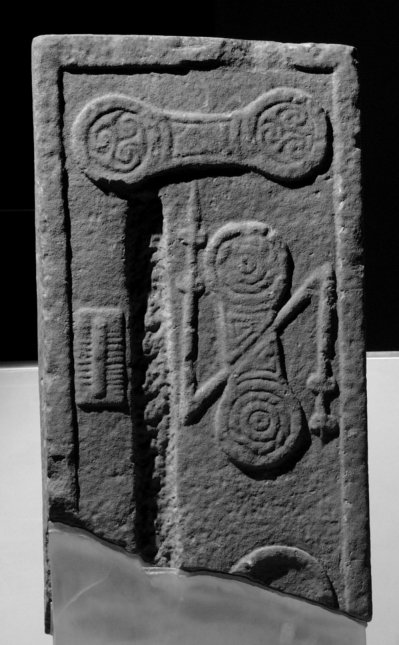
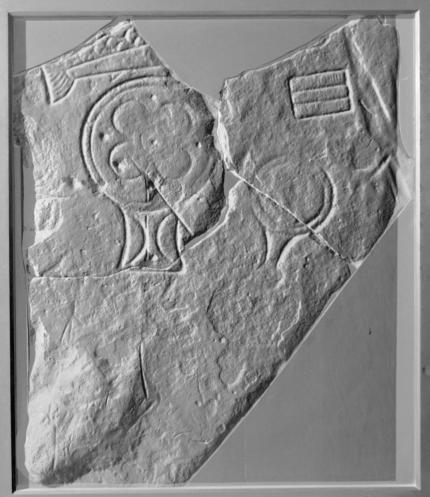
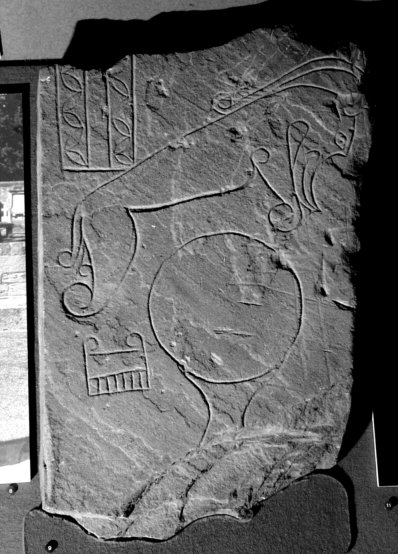
I'm not even sure they were all combs yet...
It's possible, given the fact that the church carried on the tradition, that it was something of a ritual of purification. I'd like something more definite, though, before making that assumption.



I'm not even sure they were all combs yet...
originally posted by: urbanghost
There was a mirror found in Wales very similar to the Pictish symbol.
Bronze Mirror
They're absolutely beautiful -and these from the 'barbarian hordes' :
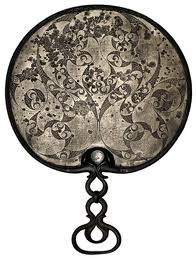
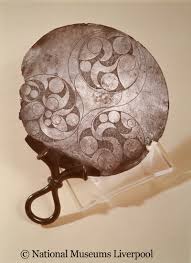
a reply to: Logarock
All I see Above is many pictures showing the same symbolism.. This picture I lifted from google images, im not sure of the source, does it come from a school representing junglian ideas? It lends as much support to early travel as it does to the "junglian idea"... If not more so, IMO. I'm open to all ideas, and my adding the wiki link about Jung was just one example of how symbols can show up around the world. Another could be reincarnation and remembering. The most logical explanation nowadays would be.. they used the Internet lol, but I agree the most likely reason would be by boat.
Desperate for what? Who is they?
Cant you see what going on above? The Jungian idea promotion, and some reputable school teach it, is simply something they grab on to support their unbelief in early travel by sea, civilization colonialism, ect.
All I see Above is many pictures showing the same symbolism.. This picture I lifted from google images, im not sure of the source, does it come from a school representing junglian ideas? It lends as much support to early travel as it does to the "junglian idea"... If not more so, IMO. I'm open to all ideas, and my adding the wiki link about Jung was just one example of how symbols can show up around the world. Another could be reincarnation and remembering. The most logical explanation nowadays would be.. they used the Internet lol, but I agree the most likely reason would be by boat.
There is far to much information for cross cultural examinations of iconographic use to support some idea like Jungs. They are so desperate it seems to me that they have opted for the pseudo explanation.
Desperate for what? Who is they?
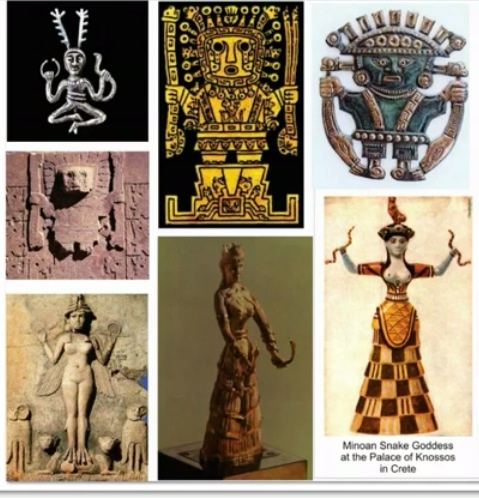
I came across some images of cave paintings that could take these symbols back even further, though it could just as much be coincidence.

This one appears to have joined discs and a comb too!
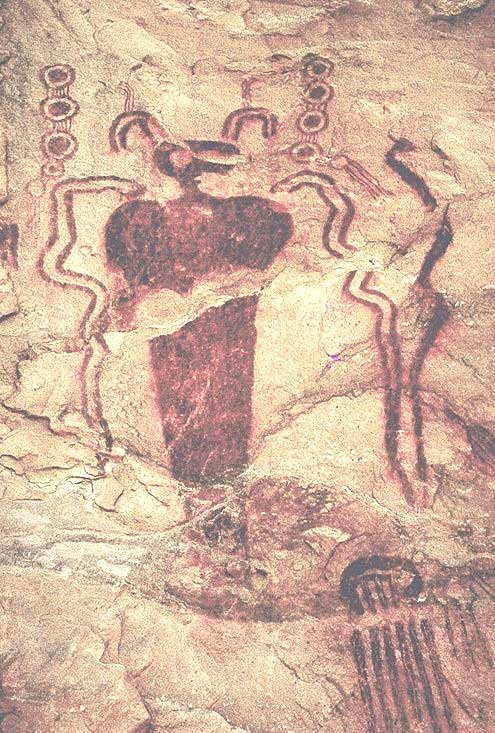
edit on 25-4-2014 by Wifibrains because: (no reason given)
edit on 25-4-2014 by Wifibrains because: (no reason given)
new topics
-
This is adorable you guys!
General Chit Chat: 6 hours ago -
Reprehensible Behavior
US Political Madness: 7 hours ago -
Defending the need for adherence to Old Testament commandments under the new covenant of Christ
Conspiracies in Religions: 8 hours ago
top topics
-
Reprehensible Behavior
US Political Madness: 7 hours ago, 10 flags -
Those Drones over NJ and elsewhere
Aliens and UFOs: 12 hours ago, 8 flags -
South Korean coup was an attempt to start WW3
World War Three: 12 hours ago, 7 flags -
This is adorable you guys!
General Chit Chat: 6 hours ago, 7 flags -
Archer aviation and the NJ drones
Aircraft Projects: 13 hours ago, 5 flags -
Defending the need for adherence to Old Testament commandments under the new covenant of Christ
Conspiracies in Religions: 8 hours ago, 5 flags
active topics
-
Drones everywhere in New Jersey ---and Elsewhere Master Thread
Aliens and UFOs • 171 • : nugget1 -
Post A Funny (T&C Friendly) Pic Part IV: The LOL awakens!
General Chit Chat • 7912 • : imitator -
This is adorable you guys!
General Chit Chat • 4 • : CriticalStinker -
The Acronym Game .. Pt.4
General Chit Chat • 1016 • : FullHeathen -
Could rampant land speculation have caused the Civil War?
History • 35 • : matafuchs -
George Stephanopoulos and ABC agree to pay $15 million to settle Trump defamation suit
Mainstream News • 23 • : Brotherman -
Pelosi injured in Luxembourg
Other Current Events • 45 • : rickymouse -
Nov 2024 - Former President Barack Hussein Obama Has Lost His Aura.
US Political Madness • 19 • : Connector -
Sky Intruders - Drones, Deception & One Weird UFO Video : Weaponizes : Episode #62
Aliens and UFOs • 7 • : DontTreadOnMe -
They Know
Aliens and UFOs • 97 • : DontTreadOnMe
